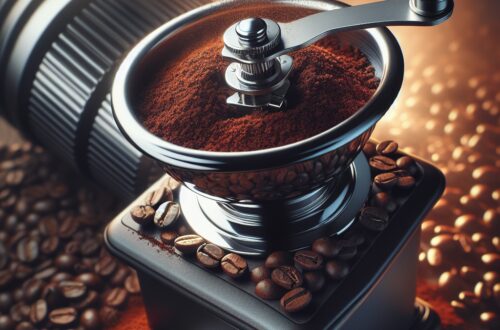“`html
The Art of Cappuccino: Mastering the Perfect Espresso, Steamed Milk, and Foam Combination
Introduction to Cappuccino
The cappuccino, an iconic Italian coffee drink, has charmed coffee lovers worldwide. Known for its perfect blend of double espresso, steamed milk, and milk foam, the cappuccino stands out among other coffee beverages with its distinct 1:1:1 ratio. Traditionally served in 6 oz portions, this rich and balanced drink has evolved in modern specialty coffee shops, where varying serving sizes have become popular. The art of crafting the perfect cappuccino lies in the quality of ingredients and meticulous technique.
Each section represents 1/3 of the cappuccino:
- Espresso: 1 part
- Steamed Milk: 1 part
- Foam: 1 part
Understanding the Cappuccino Ratio
The hallmark of a perfect cappuccino lies in maintaining the precise cappuccino ratio of 1:1:1 for espresso, steamed milk, and foam. This balance ensures a harmonious blend of strong coffee flavors and creamy textures. Altering this ratio can significantly affect the drink’s taste and feel – for instance, a stronger espresso taste with less milk or a creamier texture with more milk. The fat content of milk plays a crucial role in achieving a luscious froth, and recognizing the ideal foam layer visually and texturally is essential to mastering the cappuccino.
Whether crafting a 6 oz or a larger 12 oz beverage, maintaining this consistent ratio is key. Common pitfalls include over-frothing the milk or under-extracting the espresso, both of which can disrupt the delicate balance that defines an excellent cappuccino.
How to Make Cappuccino at Home
Creating a traditional cappuccino at home is a rewarding experience. Here’s a step-by-step guide:
- Tools and Equipment: An espresso machine, milk frother, and freshly ground coffee beans are essential for best results.
- Step 1: Brew a double shot of espresso directly into your cup.
- Step 2: Steam the milk until it’s creamy and has a velvety texture.
- Step 3: Froth the milk to create a dense, foamy layer.
- Step 4: Combine by first pouring the steamed milk, followed by a spoonful of milk foam on top.
If you don’t have an espresso machine, you can use a French press to froth milk and a Moka pot to brew strong coffee. Practicing these techniques will help you perfect your homemade cappuccino.
Exploring Cappuccino Variations
Diversify your coffee experience with various cappuccino recipes. Popular variations include:
- Mocha Cappuccino: Add a dash of chocolate syrup for a richer flavor.
- Flavored Syrups: Incorporate vanilla, caramel, or hazelnut syrups for a personalized touch.
- Regional Adaptations: Try the Australian flat white, which features a creamier texture.
- Dietary Preferences: Use almond, oat, or soy milk for vegan-friendly options.
- Seasonal Recipes: Enjoy a pumpkin spice cappuccino in the fall.
Experimenting with these variations allows you to tailor the cappuccino to your taste preferences and dietary needs.
Importance of Technique in Cappuccino Preparation
Mastering cappuccino techniques involves understanding proper espresso extraction, where water temperature and pressure significantly influence quality. Achieving the perfect milk froth requires precise steaming techniques, and pouring milk skillfully to form a smooth foam layer is an art in itself.
Consistent practice, along with the right tools and gadgets, is vital for brewing each cup to perfection. Enthusiasts may consider professional training or barista courses to refine their skills and craft barista-quality cappuccinos at home.
Nutritional Information and Health Benefits of Cappuccino
A traditional cappuccino made with whole milk contains around 120 calories. Opting for different types of milk or milk alternatives can alter the caloric content:
- Skim Milk: Lower in calories with a slightly different texture.
- Almond Milk: Fewer calories and a distinct nutty flavor.
- Oat Milk: Creamy texture but slightly higher in calories than some other alternatives.
Moderate cappuccino consumption offers health benefits, such as antioxidants in coffee, but adding sugary syrups or flavored powders impacts its nutritional value. To maintain a balanced diet, consider preparing a healthier cappuccino by using natural sweeteners and low-calorie milk options. Dispelling common myths about coffee’s health effects can help you make informed choices.
Mastering the art of cappuccino brings immense satisfaction and joy. Start your journey today and experiment with various coffee drinks. Check out more exciting coffee options here!
“`
Shop at Breville now!
https://breville.oie8.net/oqDqrE
Shop Coffee Drinks at Amazon now!
Click here





